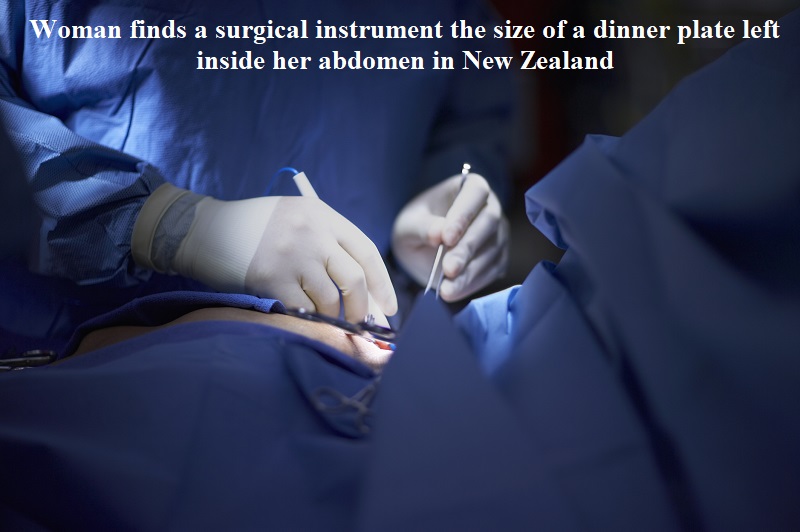
A woman in New Zealand who endured chronic pain for over a year after undergoing a caesarean section was discovered to have a surgical instrument the size of a dinner plate inadvertently left inside her abdomen. This incident has prompted a scathing report by the country’s health watchdog following an investigation.
New Zealand’s Health and Disability Commissioner, Morag McDowell, released the report on Monday (September 4) after this marked the second case of the same surgical tool being left inside a patient’s body in just two years.
An Alexis wound retractor (AWR), a medical device employed to retract the edges of a wound during surgery, was inadvertently left inside the patient, a woman in her 20s, who had undergone a scheduled C-section at Auckland City Hospital in 2020.
McDowell’s report followed an initial investigation by Te Whatu Ora Auckland, which asserted that it had not failed to “exercise reasonable skill and care” toward the patient and suggested that her findings were influenced by “hindsight and outcome bias.”
However, McDowell determined that Te Whatu Ora Auckland had breached the code of patient rights. She stated in the report, “There is substantial precedent to infer that when a foreign object is left inside a patient during an operation, the care fell below the appropriate standard.” She emphasized that this is considered a “never” event in medical practice.
The AWR, a device used to retract wound edges, was inadvertently left in her abdomen after her C-section, according to the report. One of the nurses present during the operation informed the commission that the AWR was not included in the count of surgical instruments used in the procedure.
This discrepancy might be attributed to the fact that the AWR does not enter the wound entirely, unlike other instruments, the nurse explained. Furthermore, it was revealed that a ‘large’ AWR was initially used during the surgery, but the surgeon deemed it insufficient and substituted it with an ‘extra-large’ AWR.
Typically, surgical instruments are removed after the incision is closed and the skin is sutured, but in this case, the AWR was inadvertently left behind.
The extra-large AWR, described as “about the size of a dinner plate,” is designed to retract incisions up to 17 centimeters in diameter. The tool was finally removed from the patient’s abdomen in 2021, approximately 18 months after the initial procedure, following multiple appointments with her doctor.
Reportedly, on one occasion, the pain was so severe that she visited the hospital’s emergency department. The tool was only discovered after the patient underwent an abdominal CT scan, as it was invisible to X-rays.
McDowell acknowledged that the theater staff involved showed genuine concern and offered apologies after learning about the woman’s ordeal. However, her scathing report was directed at Te Whatu Ora’s claims.
“Te Whatu Ora pointed to a lack of expert evidence to support the conclusion that [the code] had been breached and referenced known error rates,” McDowell wrote.
While she accepted that Te Whatu Ora was unaware of the risk of an AWR being retained, McDowell had “little difficulty concluding that the retention of a surgical instrument in a person’s body falls well below the expected standard of care.”
“I do not consider it necessary to have specific expert advice to assist me in reaching that conclusion,” McDowell stated, describing the breach as a “serious deviation” from the standard of care.

Post Your Comments